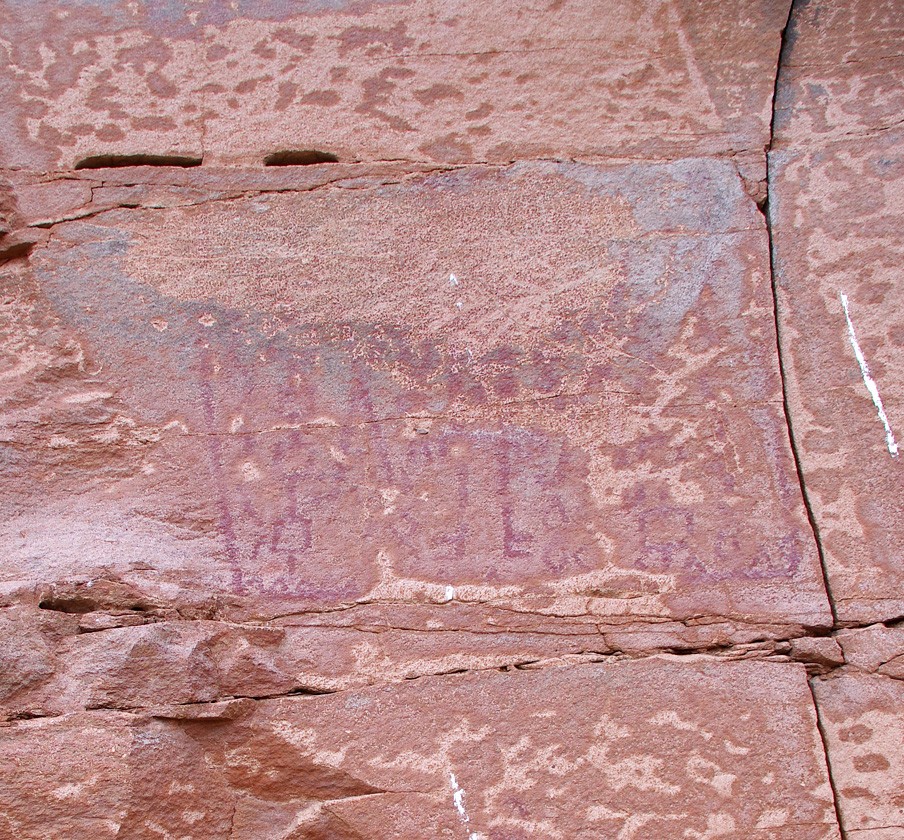
“Lord of the Camelids” in rock art painting, Mirasol locality, Alto Loa.
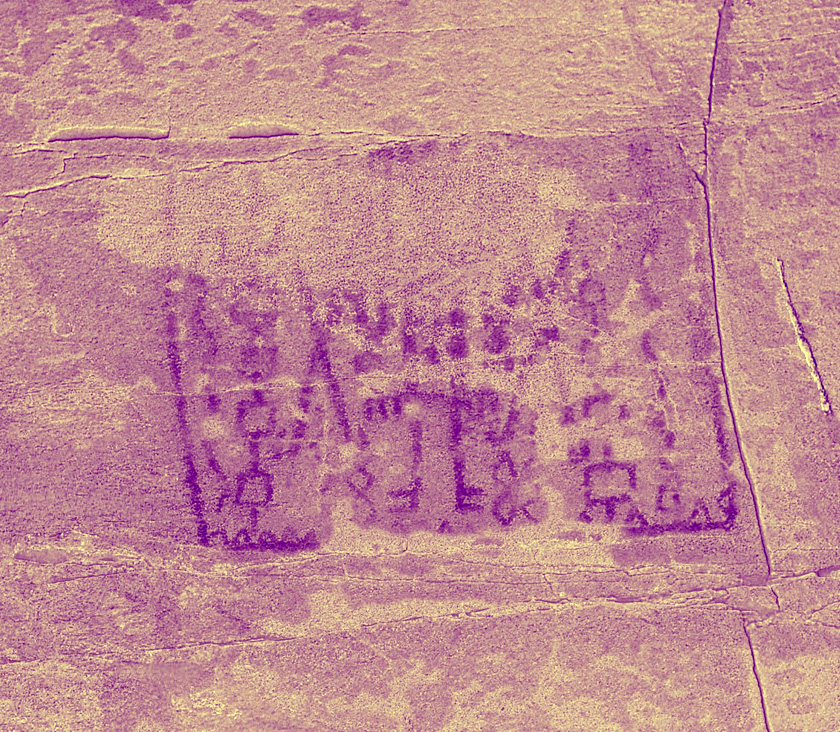
Photo enhanced with Dstrech digital treatment.

Drawing from the photo with DStrech digital treatment.
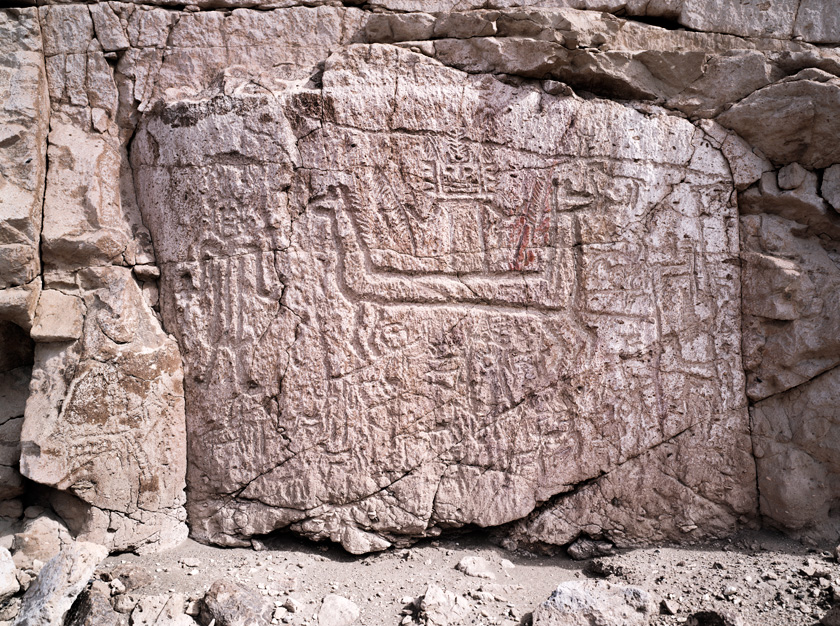
“Lord of the Camelids” seated on a two-headed camelid, La Isla locality, Alto Loa.
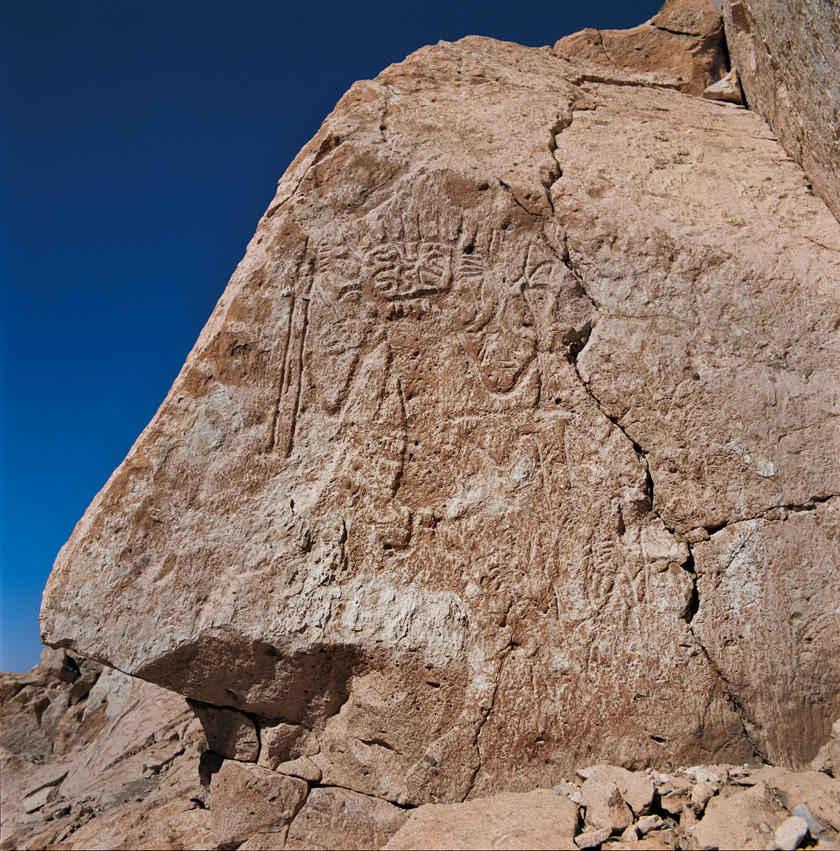
“Lord of the Camelids” holding scepters, La Isla locality, Alto Loa.

“Lord of the Camelids” on a decorated panel of a textile loincloth. Tapestry weave, camelid fiber. Chorrillos, río Loa Medio, 800 – 400 a.C. 50 x 25 cm, Museo Nacional de Historia Natural-DIBAM, N° 10.958.
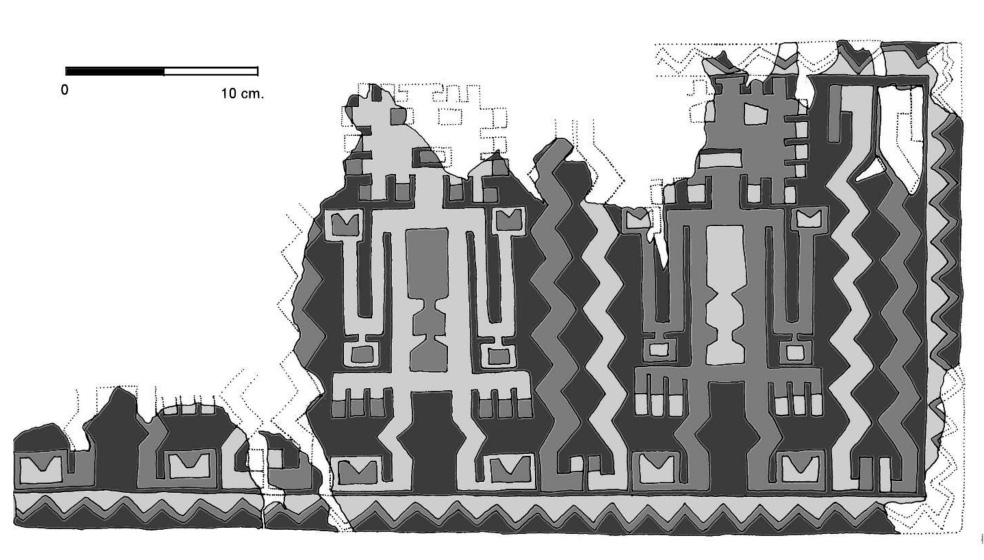
Drawing of the loincloth decorated panel.
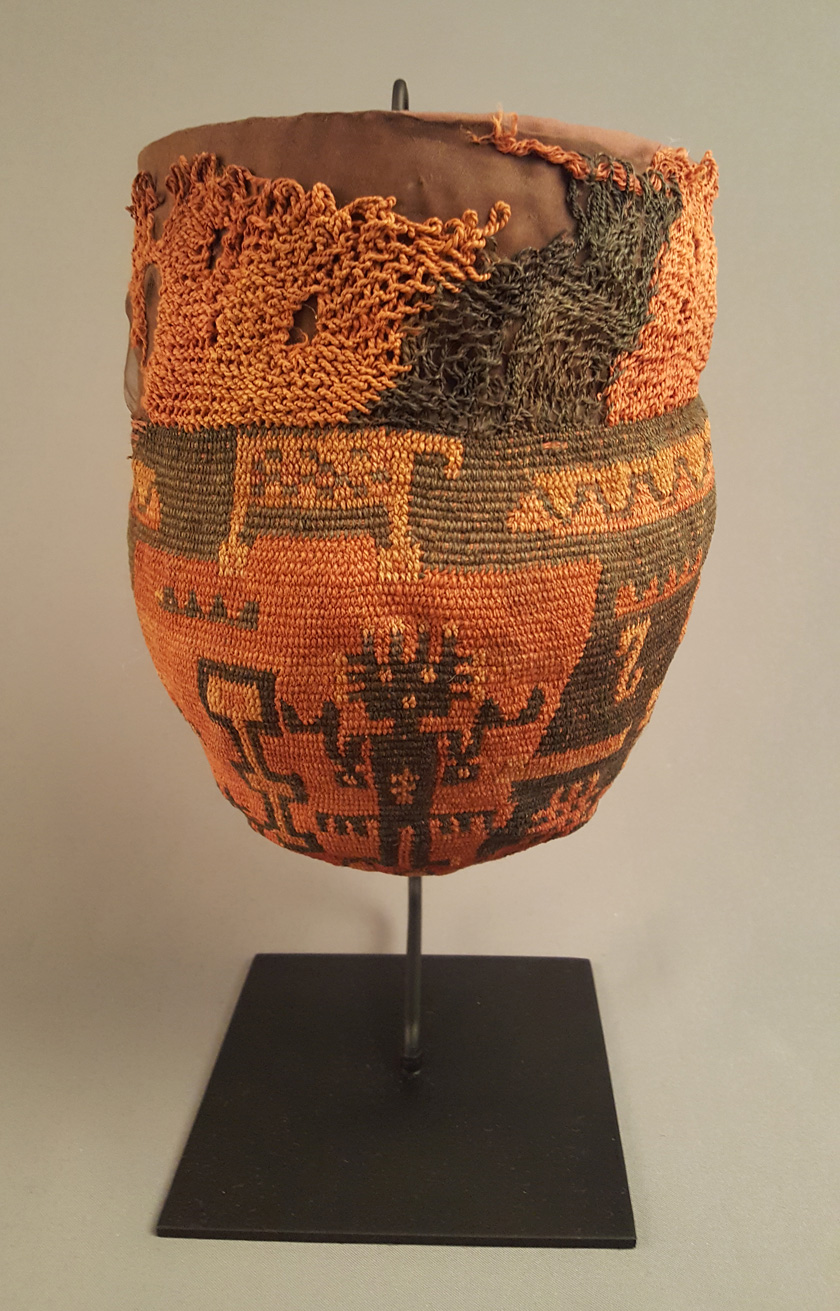
“Lord of the Camelids” on a textile bag. Coiled weave, camelid fiber. Cementerio Punta Pichalo, costa de Tarapacá, 500 a.C. – 100 d.C. 29 cm (alto), Museo Nacional de Historia Natural-DIBAM, N° 2209.
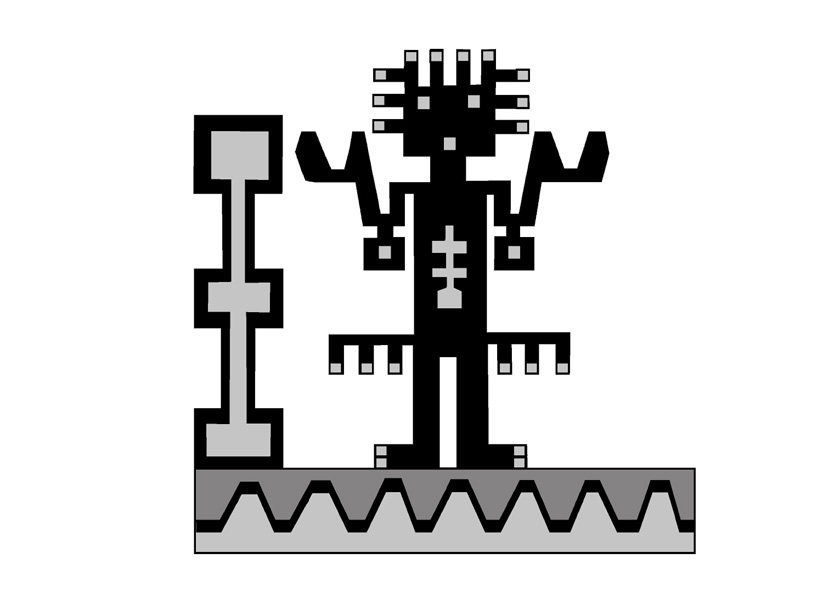
Drawing of the decorated bag.
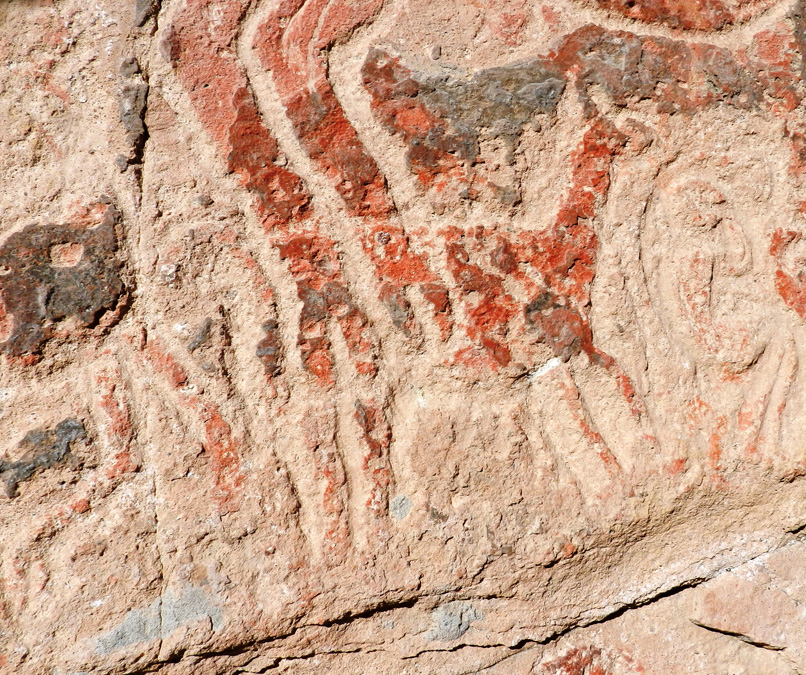
Detail of the camelid’s two-toed feet, rock art painting, Alero Taira.
The relationship between herders and llamas is expressed in a figure that is half-man, half animal and appears to be a spirit linked to llama fertility, freshwater springs, and rain.
This supernatural being is often represented sitting or standing, dressed in a tunic or overskirt with rays emanating from his head. In general, his hands and feet were divided, perhaps in emulation of the camelid’s feet, which end in two large toenails. His image appears frequently in the rock art of the region as well as on portable objects such as textiles and baskets.













































